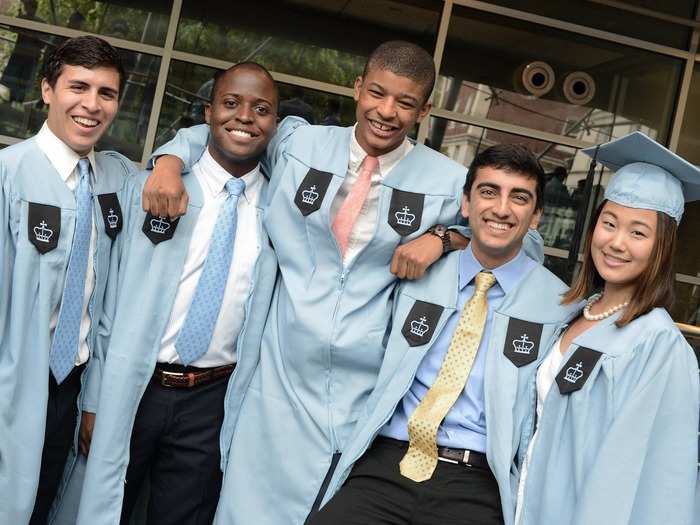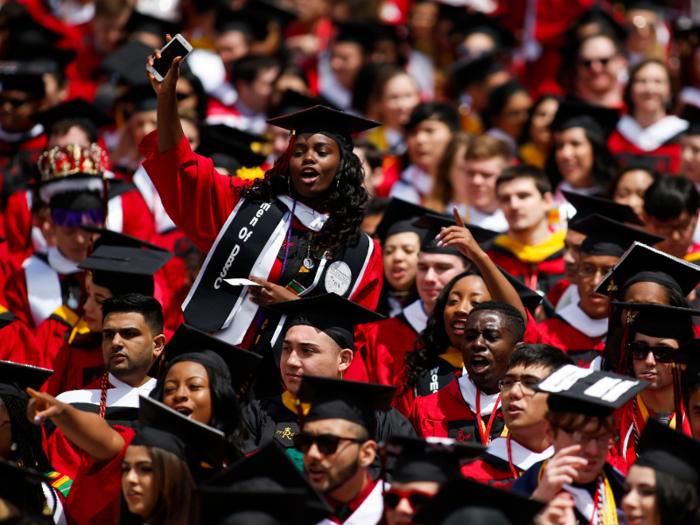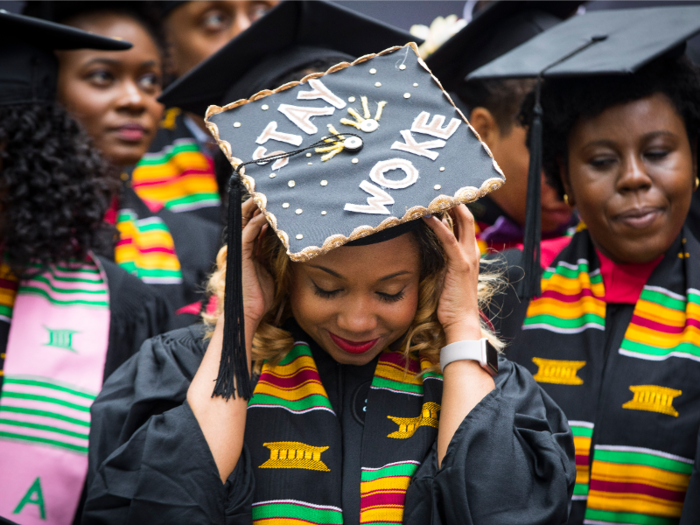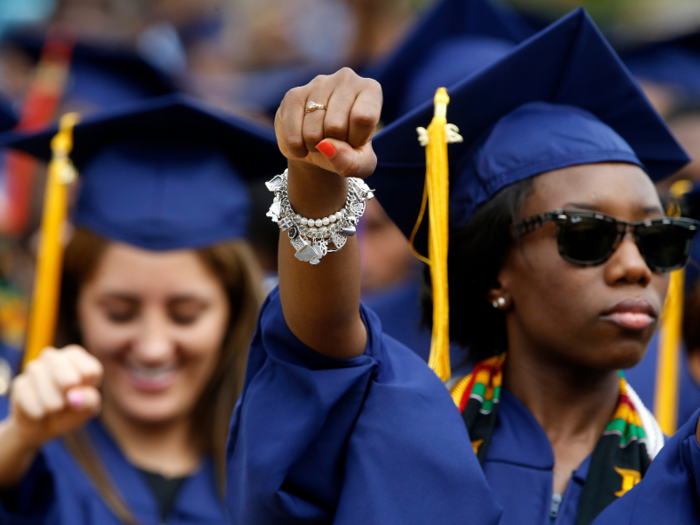- Home
- slideshows
- miscellaneous
- 8 startling facts that show just how hard the student-debt crisis is hurting black Americans
8 startling facts that show just how hard the student-debt crisis is hurting black Americans
1. 86.6% of black students borrow federal loans to attend four-year colleges, compared to 59.9% of white students.

2. Even well-off black students carry more student-loan debt.

Beth Akers, fellow at the Brookings Institution's Center on Children and Families, told Martha C. White of NBC News that black students don't benefit as much from their parents' wealth as white students do.
Well-off black families have a lower average net worth than white families, and they hold their wealth differently — mostly in homeownership as opposed to financial assets like stocks that are easy to access, White reported.
3. An average black graduate has $7,400 more in student debt than his or her white peer.

Black students with bachelor's degrees owe $7,400 more student debt on average upon graduation than white grads, according to Brookings.
The gap widens over time: after four years, black grads hold almost twice as much in student debt as their white counterparts at $53,000.
Brookings analyzed restricted-use data from the Department of Education's Baccalaureate and Beyond surveys, as well as Department of Education and Census Bureau data.
4. Black student-loan borrowers default on their loans at five times the rate of white graduates.

Though just six out of every 100 BA holders default on their loans, black borrowers are much more likely to default: 21% of them default on their loans compared to just 4% of white grads, according to Brookings. Furthermore, black graduates with a bachelor's degree are even slightly more likely to default — or don't make a payment for 270 consecutive days — than white college dropouts.
Brookings does not attribute the racial disparity to just lower levels of parent education or family income. Instead, they point to higher for-profit graduate-school enrollment and lower earnings post-grad.
5. Graduates of historically black colleges and universities (HBCUs) take on 32% more debt than their peers at other colleges.

A Wall Street Journal analysis of Education Department data found that not only do alumni at HBCUs take on 32% more debt than graduates at other public or nonprofit four-year schools, the majority of graduates haven't paid any debt in the first few years out of school.
While HBCUs make up just 5% of four-year American colleges, they make up "50% of the 100 schools with the lowest three-year student-loan repayment rates," the Journal found. The discrepancy could be because black families already have less wealth compared to other racial groups.
HBCUs are typically more affordable than other institutions, according to Student Loan Hero. Spelman College, the most expensive HBCU as of January 2019, costs $28,181 in tuition, several thousand dollars less than the national average of $32,410 for private four-year colleges.
6. Eliminating student-loan debt would narrow the racial wealth gap for young families.

The Roosevelt Institute, a liberal think tank based in New York, found that white households headed by people between the ages of 25 and 40 have 12 times the amount of wealth on average than black households.
By eliminating student debt — as presidential candidates Elizabeth Warren and Bernie Sanders have proposed to do in some capacity — the ratio shrinks to just five times the amount of wealth.
Even after canceling debt, however, the racial wealth gap will remain high: the median wealth in young white households would total $52,700, compared to $10,010 for their black peers.
7. White borrowers pay down their education debt at a rate of 10% a year, compared with 4% for black borrowers.

That's according to a study by Jason Houle and Fenaba Addo in SAGE journals. They found that racial inequalities in student debt contribute to the black-white wealth gap in early adulthood, which increases over time.
After adjusting for family background and postsecondary characteristics, black youth reported 85.8% more debt than their white peers when starting their careers, according to the authors. This disparity grows by 6.7% annually, they said.
8. Black graduates earn less money out of college, making it harder to pay off their loans.

Black college graduates ages 21 to 24 earn $3.34 less per hour than their white peers, reported Jillian Berman for MarketWatch, citing an analysis by the left-leaning Economic Policy Institute. That contributes to a $7,000 annual difference.
The data found the workers held similar qualifications and experience levels.
Popular Right Now
Popular Keywords
Advertisement